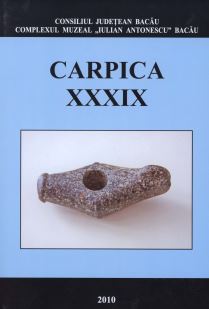
Marin Rotaru, Antichităţile Elanului
Review of: Marin Rotaru, Antichităţile Elanului, Bârlad, Editura Sfera, 2009, 318 p.
More...We kindly inform you that, as long as the subject affiliation of our 300.000+ articles is in progress, you might get unsufficient or no results on your third level or second level search. In this case, please broaden your search criteria.

Review of: Marin Rotaru, Antichităţile Elanului, Bârlad, Editura Sfera, 2009, 318 p.
More...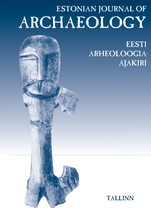
The area around the lower reaches of the Pirita River in northern coastal Estonia is a unique region where the majority of the known stone-cist cemeteries have been excavated. The number of such cemeteries is seven or eight, with approximately 50 excavated stone mounds. A profound study by Valter Lang in the 1990s, proceeding mainly from artefact finds, dated the stone-cist cemeteries of the area to roughly 600–200 BC, with one exception in 800–500 BC. The current paper summarises and discusses the recently obtained and partly published radiocarbon dates of the skeletons from these sites, including the hitherto unpublished data from Iru 18 and Kuristiku 4. A total of 28 radiocarbon dates has been obtained from nine graves of probably five cemeteries. The numbers are regrettably small, the main reason being the absence of proper excavation and osteological records, which are a prerequisite of consequential and efficient radiocarbon dating. The radiocarbon data suggest that the majority if not all cemeteries had been established between 1100 and 900 or 800 BC, and the last graves were added around 400 BC at the latest. A few graves also contained burials from the subsequent centuries. This is consistent with data from stone-cist graves in other regions of Estonia. The discrepancies between the radiocarbon dates and the dates based on artefact typo-chronologies suggest certain caution, although the most likely explanation of the differences lies in the absence of closed find complexes, which has always presented a challenge to the dating of stone-cist graves.
More...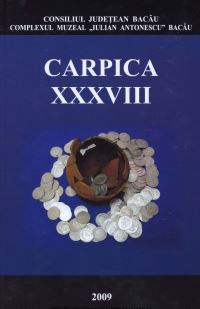
On essaie par ce texte d’adapter une méthode d’analyse des nécropoles utilisée dans la littérature étrangère aux réalités de l’archéologie roumaine et comme exemple on l’a appliquée pour la nécropole de Cernica. Dès le début, on considère qu’il est besoin de faire une suite de signalisations: premièrement, notre analyse vise les possibilités d’identification des structures sociales des nécropoles, la mise en pratique de l’analyse étant seulement pour le néolithique et l’énéolithique, intervalle temporel pour lequel on pense d’avoir quelques competences et intérêt; on pense que cette méthode, avec certaines améliorations, peut être utilisée aussi pour d’autres périodes historiques.
More...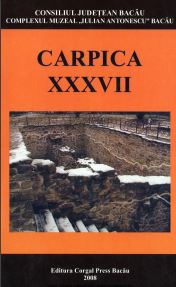
In this work, the author present a sum of lithic artefacts wich belong to the Chalcholithic and Bronze Age communities in the Neamt Depression. To restore a lot of economic and social aspects of the prehistoric communities, beside archeological informations, we used experimental and microscopical observations.
More...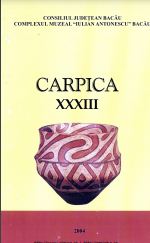
A cette occasion, nous desirons egalement vous apporter des precisions concernant la necropole de l'Âge de Bronze tardif de Doina. La presentation du mobilier funeraire et d'autres inforrnations generales sur ce type de monument archeologique ont deja ete realise en 2000 par Eugen Sava ( in fra n.2 ).
More...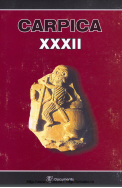
Review of: D. Monah, Gh. Dumitroaia, Felicia Monah, C. Preoteasa, Roxana Munteanu, D. Nicola, Poduri-Dealul Ghindaru, o Troia în Subcarpaţii Moldovei, Piatra.- Neamt, Editura "Constantinmatasa'', 2003, 250 p.
More...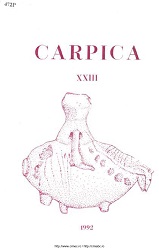
Les fouilles archéologipues dans l’sabilssement Starčevo-Criş de Trestiana ont mis au jour 42 tombes dont 11 sont appréciées appartenant aux néolitiques qui ont vécu dans cet établissement.
More...
Cu prilej ul cercetărilor întreprinse la Bărboasa-Onceşti, în primii ani ai carierii mele l-am cunoscut pe Costache Teletin. Singur s-a oferit să mă însoţească în peregrinările mele pe valea Berheciului, in căutarea de staţiuni preistorice.
More...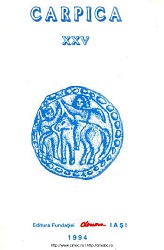
On présente les plus importants objets artistique découverts jusqu’à présent à Räcätäu, comme: 1. Le vase de type kantharos avec des representations en relief, avec la divinité suprème “le chevalier heros"...
More...
Cetatea dacică de la Brad este situată în partea de S-V a satului cu acelaşi nume, pe terasa stângă a Siretului, la jumătatea distanţei dintre Bacău şi Roman. Segmentată de un şanţ de apărare, aşezarea dacică este împărţită în două părţi inegale - partea fortificată şi aşezarea deschisă.
More...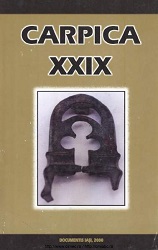
L'article tarte des divers types d'établissements spécifiques de la culture geto-dace classique: dava, l'établissement fortifie, citadelles, et établissements rurals.
More...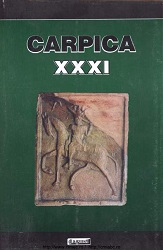
L'article aborde le problème encore peu solutionné de la delimitation précise du périmètre des habitations néolithiques et énéolithiques, dans les situations quand il n'y a pas de rangées cohérentes d'empreintes laissées par les poteaux des parois.
More...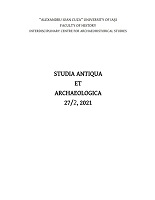
Anthropomorphic and zoomorphic plastics are often associated with complex manifestations of the spiritual life of Cucuteni communities. Therefore, knowledge and interpretation of anthropomorphic representations are necessary to have a better picture of the role played in the daily and spiritual life of prehistoric communities. The Cucuteni A-B settlement from Dâmbul Morii provides an important number of such pieces that will complete the data known so far. In this study, attention will be paid to plastic representations with painted, incised, and plastic decorations. Therefore, a batch of 27 anthropomorphic figurines was analyzed, some in a fragmentary state. Based on the decor analysis, a clear separation of figurines by gender was possible
More...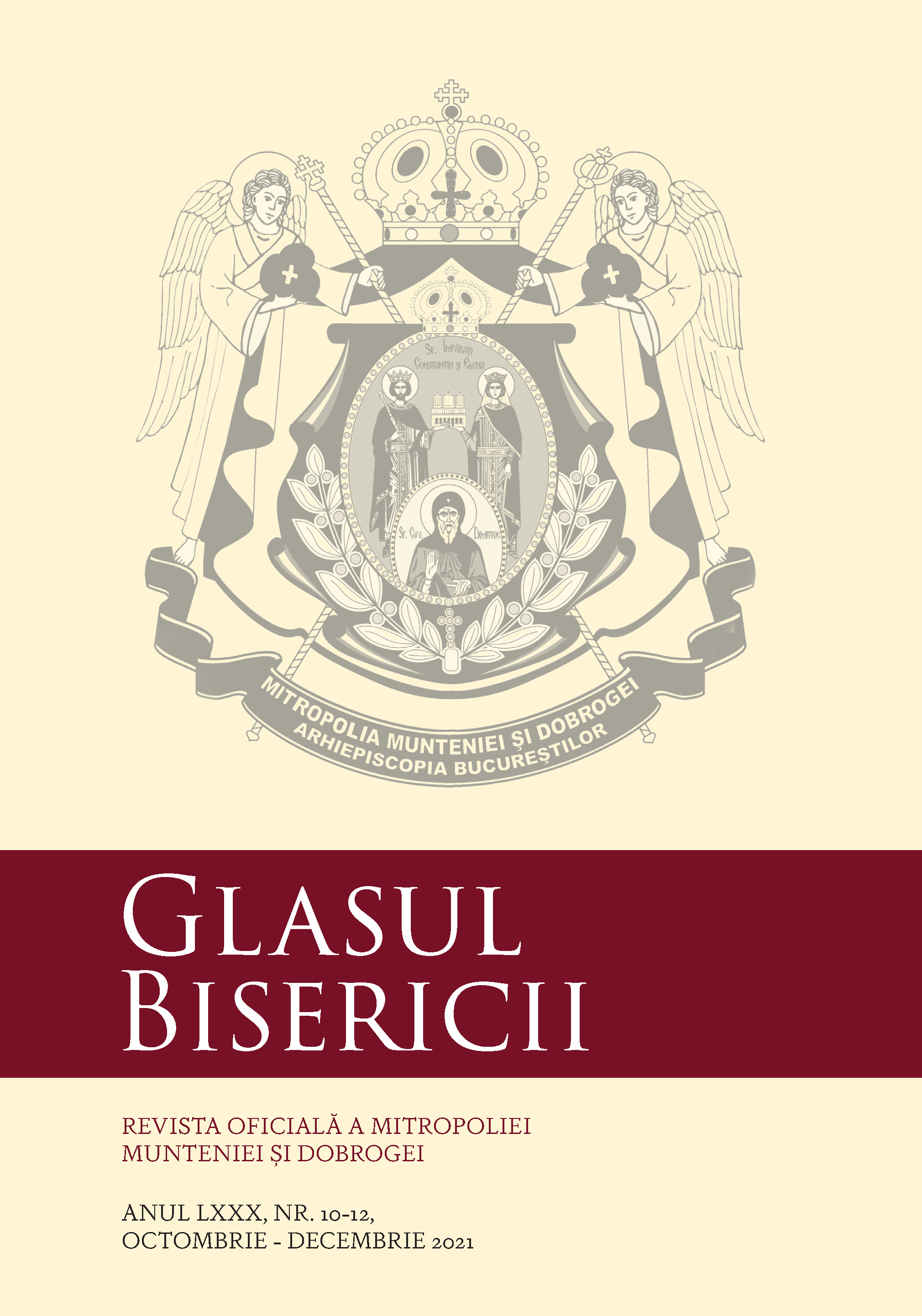
The three axioms of evolution are: uniformism, the long period of time, transformism. All of them are the metaphysical ideas which are the origin of evolutionism and define it. When they are considered the opera of the vague god of theists, they become religious ideas. Not being revealed by the true God, but inspired by the pagan philosophy, they are not demonstrated, nor demonstrable, they are not scientific observations, but their distortions only. Without them evolutionism is abolished, having no content. We will meet these three as preconceived ideas in all the „demonstrations” of the evolutionist model. To interpretate the scientific data this way, the researcher must believe in them without researching them, because if he would research them seriously, he could no longer be an evolutionist.In this article we have listed all three evolutionary axioms and we have shown that they are neither in line with the revelation of the Holy Spirit, nor with current scientific data. Uniformity is proved false by Saint Maxim the Confessor, through neo-catastrophism and geological evidence. The long time is shown to be false as well through the VIth Holy Ecumenical Synod, global and local dating (including radiometric) and the presence of unaltered soft tissue in dinosaurs. We have also explained that transformism is false as well, again through the words of the Saint Maxim the Confessor, by studying some false intermediate links, the fossil record, the mutations made on the vinegar flies and the statistics of the mutations.
More...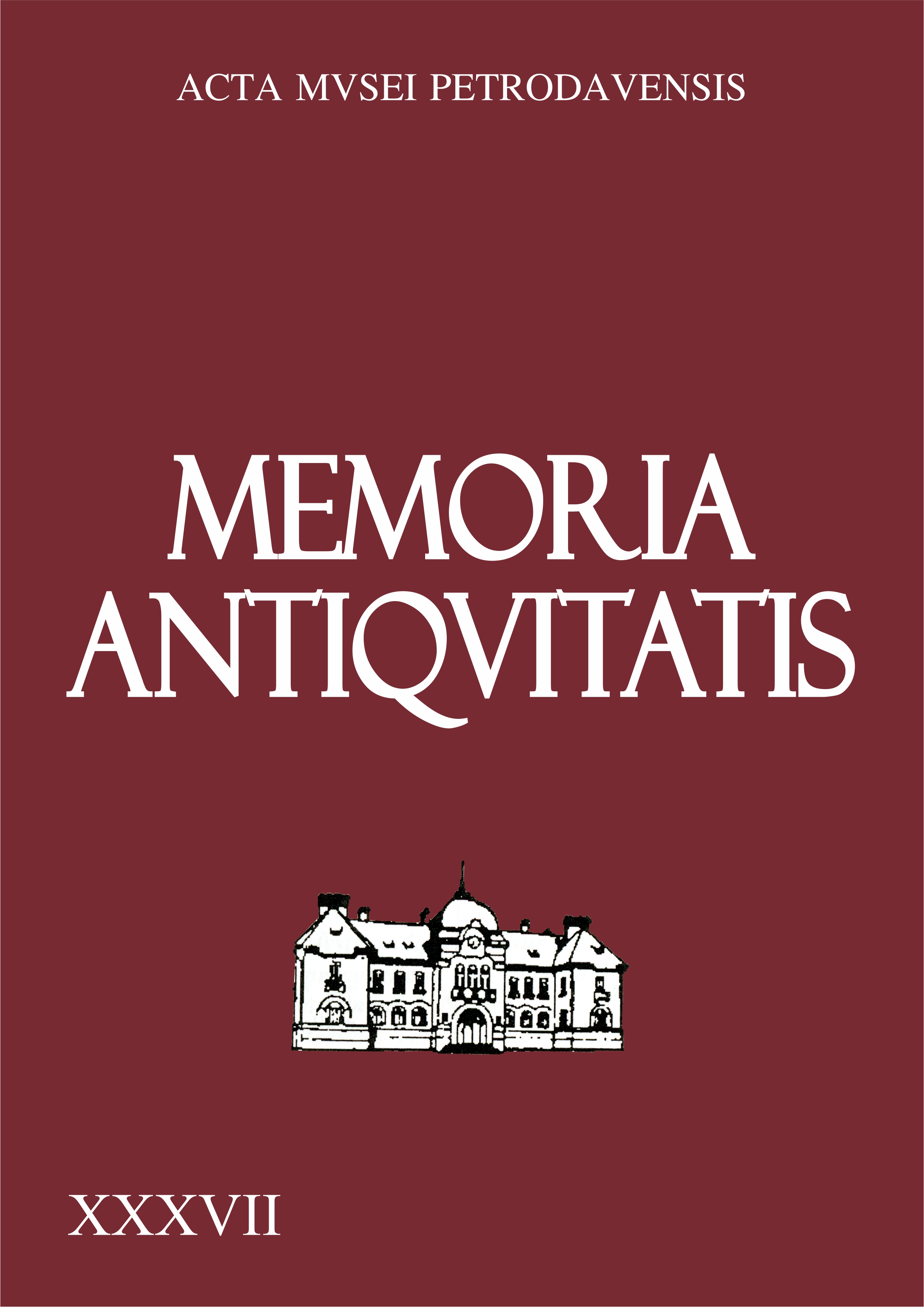
In this article, we feature the most significant technological stages of animal hides processing during the Late Bronze Age, in the North-West Pontic area. The topic is challenging because this occupation – due to organic raw material use – left no direct archaeological evidence. From this perspective, the reconstruction of the entire technological process involves both archaeological information, ethnographic and ethnoarchaeological data. Hence, we start with the relevance of animal breeding within the economy of Late Bronze Age communities, and we discuss the technological stages of animal hides processing to turn them into raw material. Unfortunately, because it is a perishable item, no animal hides artefacts have been found in archaeological contexts. However, the occupation providing this organic product has been partially reconstructed indirectly, relying on the artefacts used for scraping, cleaning, cutting, and perforating. Thus, the authors enumerate the bone artefacts used (i.e., notched scapulae, „skates”, piercers and bronze items used for hides perforation). Along with natural fibres processing, animal hides processing has been intensely practised: on the one hand, because the raw material was available and, on the other, because people obtained an entire array of products from these organic materials.
More...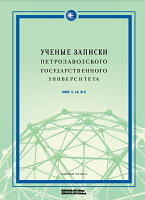
The paper presents the results of a geochemical investigation of the raw material for making stone chopping tools of the so-called Russian Karelian type, which were actively used for exchange interactions between the peoples of the North-Eastern Europe in the IV–III millennia calBC. The study is based on the ICP-MS analyses of 54 samples from different regions of Karelia, Finland, and Estonia conducted in the analytical laboratory of the Karelian Research Centre of the Russian Academy of Sciences. The investigation was aimed at confirming the proposition suggested in the early XX century that these tools were produced in one production centre on the western shore of Lake Onega (the outfall of the Shuya River) and spread by exchange. For this, the authors used the modern geochemistry methods, which greatly reduce the influence of the subjective human factor. The samples that were found at great distances from the known workshops, including those found outside Karelia, were analyzed for the first time. The new data generally confirm the idea that all certain tools of the Russian Karelian type, regardless of their discovery place, originate from the Shuya centre, and the raw material for this centre was taken from the volcanic greenstone rocks (“metatuff”) deposits that can be found in the vicinity. The study is well in line with the investigations of the organization of the prehistoric exchange in the North-Eastern Europe which are actively being carried out nowadays.
More...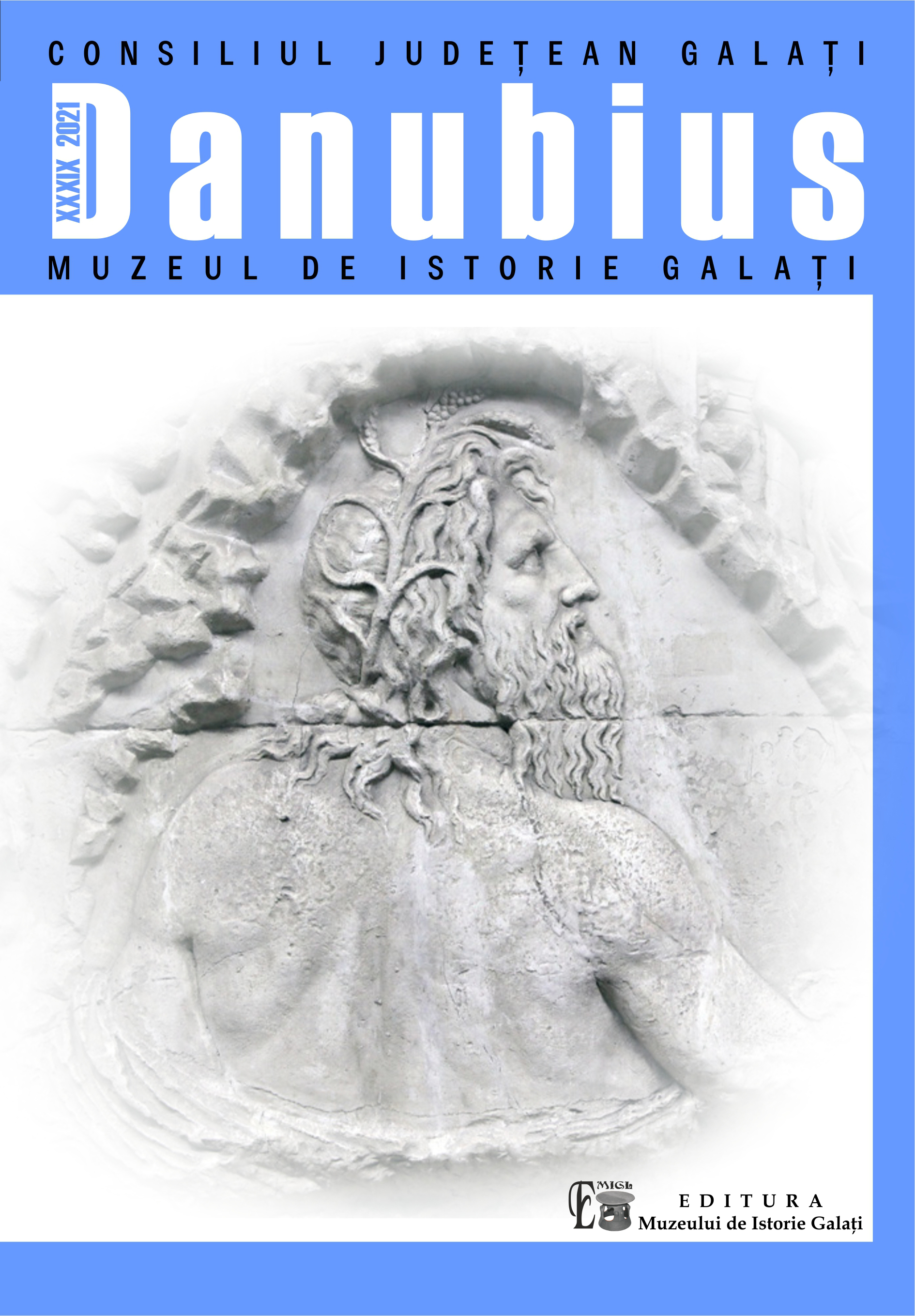
The City Hall of Negrilești and „Florea Julea” Secondary School in Negrilesti intend to build a school gym on a plot of land located in the archaeological site, 6m West of the S-W corner of the school building. The discharge of the archaeological burden of this PLOT, with an area of 816 square meters, was undertaken by investigating the SSP/2021 surface, through machine scalping the vegetation layer, up to a depth of 0.30m. In the SSP surface, where the school gym will be built, 42 housing complexes from the Bronze Age, the post-Roman period (4th century AD), pre-medieval (9th-10th centuries AD) and the modern era were unearthed. The most numerous complexes are pits with household deposits, 26 in total. Materials specific to the Bronze Age, Noua Culture, were discovered in 18 pits, five pits containing materials from the 4th century AD (Santana de Mures-Černjachov Culture), whereas the remaining three pits belong to the modern period. Nine complexes are residential structures, dwellings or outbuildings, out of which three belong to the Bronze Age, three are from the 4th century AD, two dwellings belong to the 9th-10th centuries AD and one is from the modern period. Eight fire installations (domestic hearths) were also investigated, five of which belong to the post-Roman period (4th century AD), two hearths served homes from the 9th-10th centuries AD, and one is from the modern period.
More...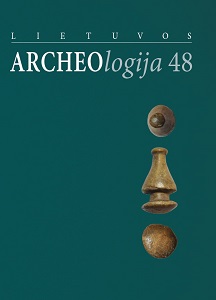
In this paper, we present the main results of interdisciplinary project that allowed us to formulate a new perspective on the economy of the Late Bronze Age in the Eastern Baltic region. New excavations at the Late Bronze Age fortified settlements of Garniai 1 (Utena district municipality) and Mineikiškės (Zarasai district municipality) lead us to analyse the economy of the communities in much greater detail and to formulate a more reliable economical model than before. This paper reviews the new results of archaeobotanical investigations of these fortified settlements, as well as δ13C and δ15N data of food remains in Late Bronze Age pottery, grains and animal bone collagen samples. These analyses allowed us to refine and clarify the likely dietary practices of consumers of certain products in the Eastern Baltic region. The paper also publishes new data on the elemental composition and lead isotopes of metalware, thereby adding to our earlier findings These studies show that metallurgy as a specialized activity did not play a significant role in the Late Bronze Age economy, but its emergence was driven by the economic changes of the period. In contrast, the production of high-level bone-antler artifacts reflects the activity of specialized craftsmen in Late Bronze Age settlements. The collection of a new large and varied dataset allows us to determine the lifestyle and dietary habits of the people living in these settlements. By developing a new model of the Late Bronze Age, we present a picture of the interwoven economies of agriculture, animal husbandry, hunting, fishing, gathering, metallurgy and bone craftsmanship as a whole, asking what might have influenced the distinctive development of the economy of the eastern Baltic Sea region during the Late Bronze Age.
More...
The main goal of this paper is to publish two fragments of Panathenaic prize amphorae that have been excavated in the northern part of the Roman citadel in Olbia Pontica. Stylistic analysis of both fragments allowed us to date them to the last third of the 6th century BC and to draw the conclusion that they belong to the same amphora manufactured at the time of the Antimenes Painter.
More...
Archeologija kaip istorijos mokslo šaka, XIX a. II pusėje įgaudama vis didesnį populiarumą, užvaldė daugelio Europos inteligentų protus. Tenkindama scientistinius praeities tyrinėtojo poreikius, ji žadino nenumaldomą domėjimąsi tuo, ką būtų galima pavadinti daiktine senovės žmonių istorija. Bandydama įtvirtinti savo autonominės disciplinos statusą, archeologija ieškojo modernių galimybių, leidžiančių jai užsitikrinti deramą vietą pozityvizmo idėjų apibrėžtame pasaulyje.
More...